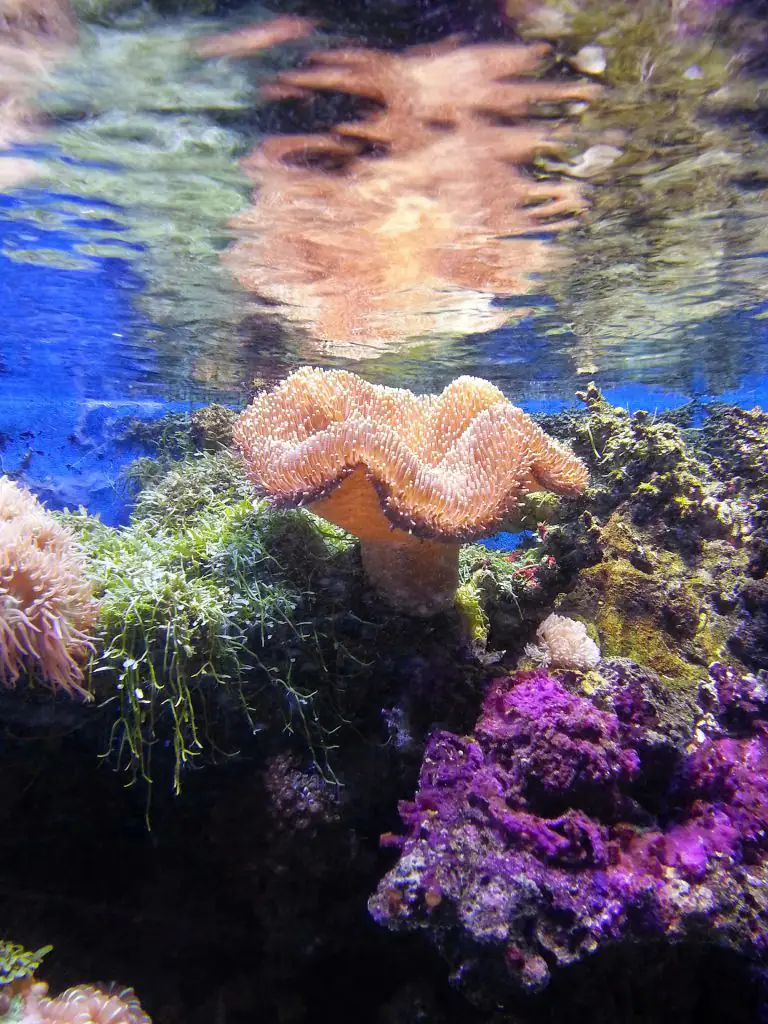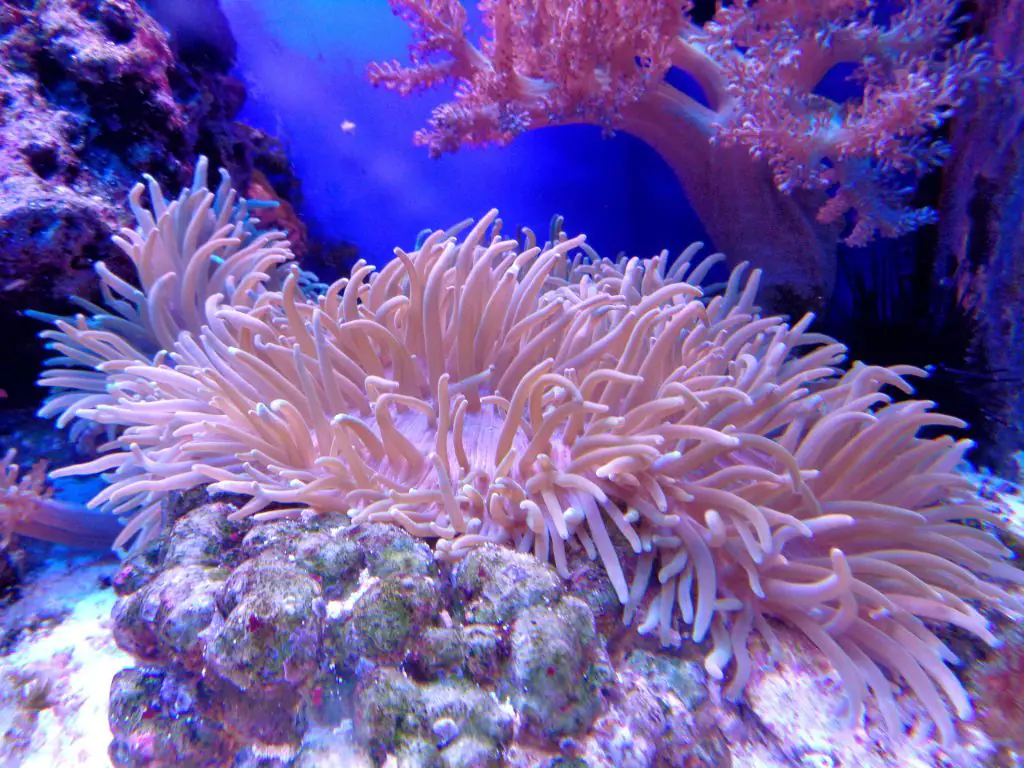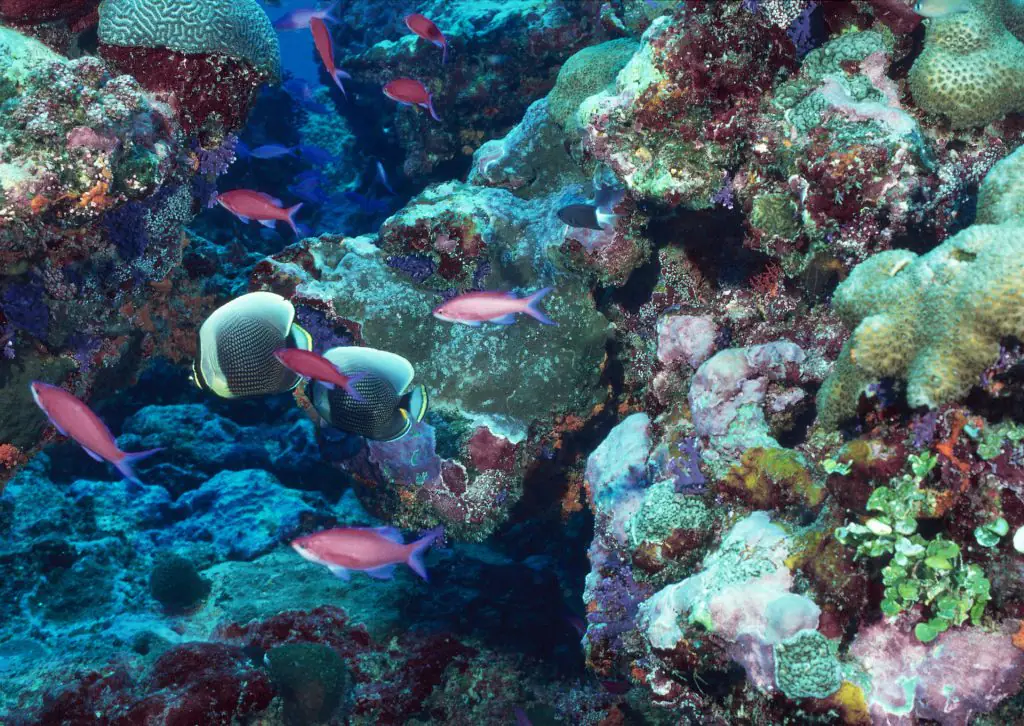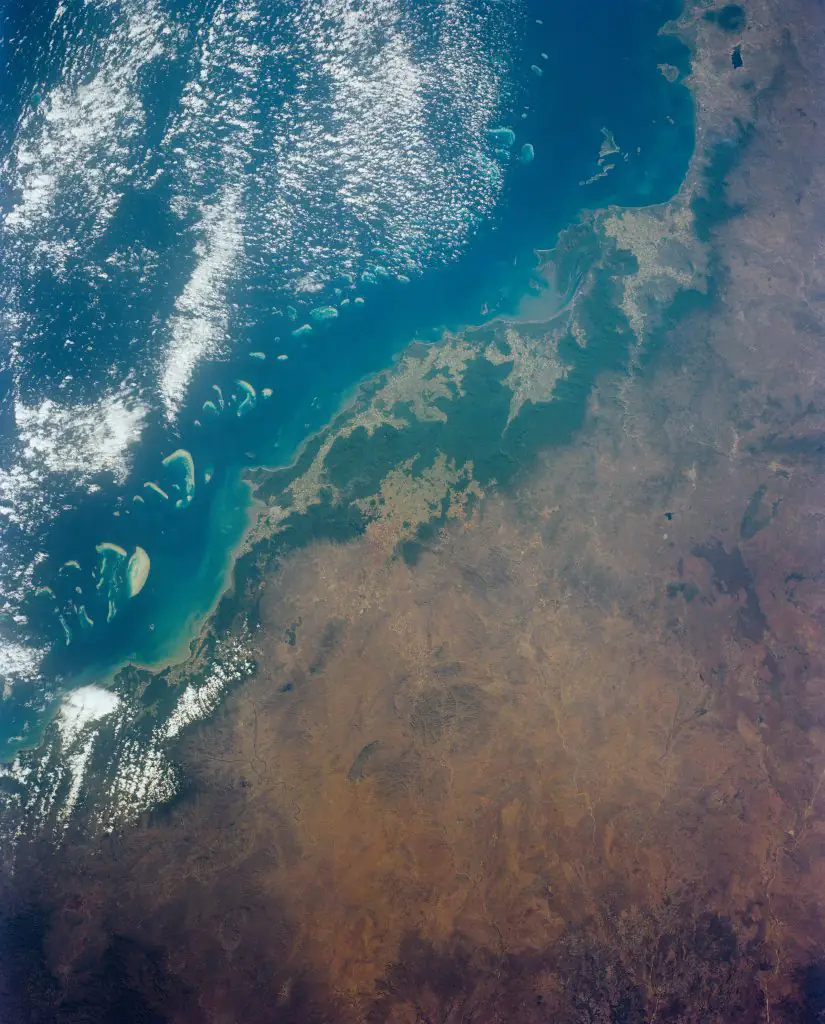Calling the Coral Reef Home!

Around 71% (and rising) of Earth’s surface is covered in water, providing a home to an estimated 50-80% of the life on our planet. Our oceans are our most diverse habitat and are vital to Earth’s ecology. Among the underwater habitat is the coral reef, the most diverse ecosystem that 25% of marine life calls home! Coral reefs are often called the rainforests of the sea!

Coral reefs are huge underwater structures composed of calcium carbonate; a chemical secreted by animals called coral to create a hard, durable exoskeleton protecting their mushy, sac-like body. Coral is a hard, stone-like material that is commonly found in clear, tropical water, but can be also found in the coldest, darkest depths in the ocean. An individual coral is called a coral polyp, these polyps live on the calcium carbonate exoskeletons of their coral ancestors. Each coral polyp builds upon the existing coral structure by adding their own exoskeleton; the coral reef growing massively over centuries from one little exoskeleton at a time. When you look at a modern coral reef, you’re looking at 5,000 to 10,000 years of coral history!

Fish, octopus, lobster, crabs and even some sharks depend on the coral reefs for food, shelter, and a place to raise their families! The Northwest Hawaiian Island coral reefs supports more than 7,000 species of fish, invertebrates, plants, birds, sea turtles and marine mammals! Coral reefs provide a perfect example of a symbiotic relationship, this is an interaction between two or more organisms living closely together. The coral reef lift algae and phytoplankton high enough to reach sunlight to photosynthesize, in turn these plants provide food for the coral! Coral reefs are a community of plants and animals working together!

Coral reefs are beautiful, vibrant colors and can stretch thousands of miles long! The largest reef in the world is the Great Barrier Reef off the coast of Australia; this reef is 1,200 miles long, you can see it from space! That’s longer than the distance between Seattle, Washington and Los Angeles, California! While coral reefs have been established over 10 million years, humans have severely threatened these vibrant ecosystems. Pollution, sedimentation, unsustainable fishing practices, and climate change warming ocean temperatures are contributing to ocean acidification. These stressors are causing the beautifully colored corals to bleach and can even kill the corals, bleaching hundreds of miles of coral reef each year.
It is our duty to protect the life on our planet, and our coral reefs need to be protected. Without this ecosystem, we would be destroying the habitat of ¼ of the ocean’s species. Celebrate World Ocean’s Day on June 8th to celebrate ocean life and protect our planet’s largest habitat.
Build your own coral reef today! See the experiment here:
https://sciencemadefun.net/downloads/coral-reef.pdf

